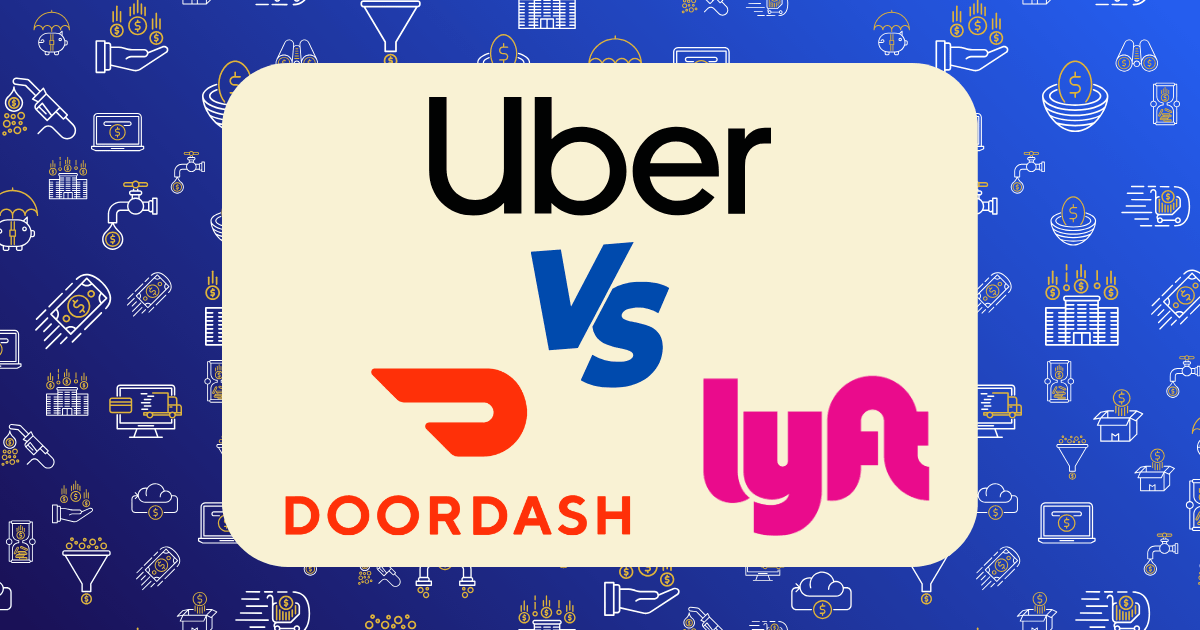Pet Sitting Empire: How I Built a $1,000/Month Side Business Through Rover

Eighteen months ago, I was scrolling through my phone looking for yet another side hustle to supplement my income. Fast forward to today: I’ve built a pet sitting business that consistently generates $1,000+ monthly while working just 10-15 hours per week. The best part? I started with zero business experience and less than $100 in startup costs.
This isn’t about getting rich quick. It’s about building a sustainable income stream that leverages existing platforms while creating genuine value. Here’s my exact blueprint for turning your love of animals into a four-figure monthly income.
The Economics of Pet Sitting in 2025
Before diving into tactics, let’s examine the current market reality:
- The pet care industry is projected to reach $202.6 billion by the end of 2025, growing at 2.7% annually
- Average earnings for Rover providers in 2025:
- Dog walking: $15-30 per 30-minute walk ($17.25/hour average)
- Drop-in visits: $10-20 per visit
- Overnight pet sitting/boarding: $35-75+ per night
- Doggy daycare: $25-40 per day
- Rover takes a 20% service fee from each booking (you keep 80% plus 100% of tips)
- Part-time sitters average $200-500 weekly, while full-time providers can earn $700-1,200+ weekly
What most people miss is that pet sitting isn’t just about the hourly rate—it’s about strategic service stacking and client acquisition. Let me show you exactly how I built my business.
My 5-Phase Pet Sitting Empire Blueprint
Phase 1: Strategic Profile Creation (Week 1-2)
Most Rover providers create generic profiles that blend into the sea of competition. I took a different approach:
- Identified my unique value proposition:
- Experience with anxious/special needs dogs
- Flexible scheduling for last-minute bookings
- Daily photo/video updates with detailed reports
- Created a professional profile:
- Professional headshot (invested $30 for a friend’s photography session)
- Background check completion (Enhanced version: $35)
- Detailed service descriptions addressing specific pain points
- Strategic pricing:
- Initially priced 10-15% below market to gain traction
- Clearly defined premium service add-ons (medication administration, extended walks, etc.)
- Created tiered pricing based on pet size/needs
“Your profile should read like a solution to specific problems, not a generic list of services,” advised Marcus T., who built a six-figure pet care business in Chicago.
Phase 2: Initial Client Acquisition (Month 1-2)
Rather than waiting passively for bookings, I implemented a proactive approach:
- Optimized for Rover’s algorithm:
- Maintained 100% response rate by setting up notification alerts
- Always responded within 30 minutes (even if just to acknowledge receipt)
- Kept calendar meticulously updated to avoid decline rates
- First client strategy:
- Offered free meet-and-greets with flexible scheduling
- Prepared a “welcome packet” with service details and emergency protocols
- Followed up with personalized messages referencing specific details about their pets
- Above-and-beyond service execution:
- Arrived 5 minutes early to every appointment
- Sent photo updates with detailed descriptions of activities/behavior
- Left handwritten thank-you notes after service completion
This approach led to my first 5 clients and 8 five-star reviews within the first month—crucial social proof that accelerated my business growth.
Phase 3: Strategic Service Expansion (Month 3-4)
After establishing a baseline of clients, I implemented service stacking to maximize revenue:
- Identified complementary services:
- Added house-sitting to boarding services
- Offered midday drop-ins for clients with longer work hours
- Created “adventure walks” at premium rates
- Time-block optimization:
- Scheduled multiple drop-ins in the same neighborhood
- Arranged walking schedules to minimize travel time
- Coordinated overnight stays with daytime services
- Seasonal service additions:
- Holiday-specific packages during peak travel seasons
- Summer “staycation” packages for pets
- Back-to-school transition services for anxious pets
This expansion increased my average revenue per client from $45 to $78 without requiring significantly more time.
Phase 4: Client Retention Systems (Month 5-6)
Acquiring new clients is expensive. I focused on retention through systematic relationship building:
- Personalized communication system:
- Created templates for regular updates with personalization fields
- Maintained a pet database with preferences, behaviors, and special needs
- Sent birthday messages to pets with small gifts ($5 value)
- Loyalty program implementation:
- Offered 10% discount for recurring weekly bookings
- Created a “frequent boarder” program (5th overnight stay at 50% off)
- Provided priority booking for regular clients during holidays
- Feedback optimization:
- Sent post-service surveys to identify improvement areas
- Implemented suggested changes and followed up
- Directly addressed any concerns before they affected reviews
These systems increased my client retention rate to 87%, significantly reducing the need for constant new client acquisition.
Phase 5: Business Scaling (Month 7-12)
With solid foundations in place, I focused on strategic scaling:
- Pricing optimization:
- Gradually increased rates by 15% for new clients
- Implemented a 5% annual increase for existing clients
- Added premium service tiers for specialized care
- Geographic expansion:
- Extended service radius strategically to higher-income neighborhoods
- Created zone-based pricing to account for travel time
- Established partnerships with local businesses for cross-promotion
- Time leverage strategies:
- Focused on higher-value overnight stays vs. single walks
- Grouped services geographically to minimize transit time
- Prioritized multi-pet households for increased earnings per visit
By month 12, I had established a stable client base of 22 regular clients and 15+ occasional clients, consistently generating $1,000+ monthly while working just 10-15 hours weekly.
The Financial Breakdown: My Actual Numbers
Here’s a transparent look at my monthly revenue streams:
AVERAGE MONTHLY REVENUE (MONTH 12):
- Overnight boarding/sitting: $625 (10 nights @ $62.50/night)
- Dog walking: $240 (20 walks @ $12/walk after Rover fees)
- Drop-in visits: $180 (15 visits @ $12/visit after Rover fees)
- Holiday/premium services: $120 (varies seasonally)
- Tips: $85 (approximately 8% of service value)
- TOTAL MONTHLY REVENUE: $1,250
MONTHLY EXPENSES:
- Transportation costs: $60
- Pet supplies/treats: $25
- Marketing materials: $15
- Insurance: $30
- TOTAL MONTHLY EXPENSES: $130
NET MONTHLY PROFIT: $1,120
This translates to approximately $75-112 per hour of actual work, making it one of the most time-efficient side hustles I’ve ever built.
7 Critical Success Factors Most Pet Sitters Miss
Through my journey, I’ve identified these key differentiators that separate successful pet sitting businesses from struggling ones:
1. Strategic Scheduling Density
Instead of taking any client anywhere, I focused on building client clusters in specific neighborhoods. This reduced travel time and increased hourly earnings by 30-40%.
Implementation Tip: Create a Google Maps visualization of your clients and actively recruit in areas with existing density.
2. Premium Service Positioning
Rather than competing on price, I positioned my services as premium experiences with exceptional communication and personalized care.
Implementation Tip: Create service “packages” with names that convey value (e.g., “Executive Pet Care” instead of “Dog Walking”).
3. Psychological Pricing Strategy
I implemented tiered pricing with strategic anchoring to guide clients toward my preferred service options.
Implementation Tip: Create a three-tier pricing structure where your preferred service is the middle option, making it appear as the “value choice.”
4. Systematic Review Generation
Reviews are currency on Rover. I created a systematic approach to generating consistent 5-star feedback.
Implementation Tip: Send a personalized message before leaving a review request, highlighting specific positive moments from the service.
5. Holiday Booking Strategy
Holiday periods can generate 2-3x normal rates. I developed a specific strategy for maximizing these high-value periods.
Implementation Tip: Contact regular clients 60-90 days before major holidays to secure bookings before they consider alternatives.
6. Client Communication Templates
I created a library of customizable templates that maintained personalization while saving hours of typing.
Implementation Tip: Build a template system with customization fields for pet names, behaviors, and specific activities.
7. Tax Optimization Framework
As independent contractors, pet sitters can deduct numerous expenses that significantly impact net income.
Implementation Tip: Track mileage between clients (not from home), portion of home used for pet sitting, and all supplies/services related to the business.
Common Pitfalls to Avoid
My journey wasn’t without challenges. Here are the mistakes I made so you don’t have to:
1. Underpricing Services
Initially, I priced too low to attract clients, making it difficult to increase rates later. Start at market rate or slightly below, but have a clear plan for price increases.
2. Accepting Problematic Clients
Not all clients are worth keeping. I learned to identify red flags early: excessive demands, poor communication, or unreasonable expectations.
3. Inefficient Scheduling
In the beginning, I accepted jobs across town from each other, wasting hours in transit. Geographic clustering is essential for profitability.
4. Neglecting Business Systems
Without systems, you’re just trading time for money. Create templates, processes, and automation to scale efficiently.
5. Ignoring Liability Protection
Pet sitting carries risks. I now use Pet Sitter Insurance ($30/month) in addition to Rover’s guarantee for comprehensive protection.
Building Beyond the Platform: The Next Level
While Rover provided an excellent foundation, true business ownership means reducing platform dependency. After establishing my client base, I began a careful transition:
- Created a simple website using Squarespace ($16/month)
- Established a business entity (Single-Member LLC) for liability protection
- Implemented a client management system through Time To Pet ($35/month)
- Gradually transitioned select clients to direct bookings (offering 10% savings from Rover prices)
This hybrid approach maintains Rover’s benefits for new client acquisition while building a more profitable direct business.
Is This Scalable in 2025 and Beyond?
Despite platform saturation concerns, the pet care market continues expanding. The key is specialization and service quality rather than competing solely on price.
As one successful pet sitter noted: “The pet care industry is relationship-driven. Clients who trust you with their fur babies will pay premium rates and remain loyal if you provide exceptional service.”
Your 30-Day Action Plan
Ready to build your own pet sitting empire? Here’s your roadmap:
Days 1-7: Foundation Building
- Create optimized Rover profile
- Complete background check
- Research competitive rates in your area
- Prepare service descriptions and policies
Days 8-14: Launch Preparation
- Create client communication templates
- Establish service areas and availability
- Set up tracking systems for bookings and expenses
- Prepare welcome materials for first clients
Days 15-30: Client Acquisition
- Respond to inquiries within 30 minutes
- Offer exceptional service with detailed updates
- Request reviews after successful bookings
- Analyze performance and adjust strategies
Remember, this is a relationship business built on trust. Every interaction is an opportunity to demonstrate your value and build a foundation for long-term success.
Have you tried pet sitting as an income stream? What strategies have worked for you? Share your experiences in the comments below!







